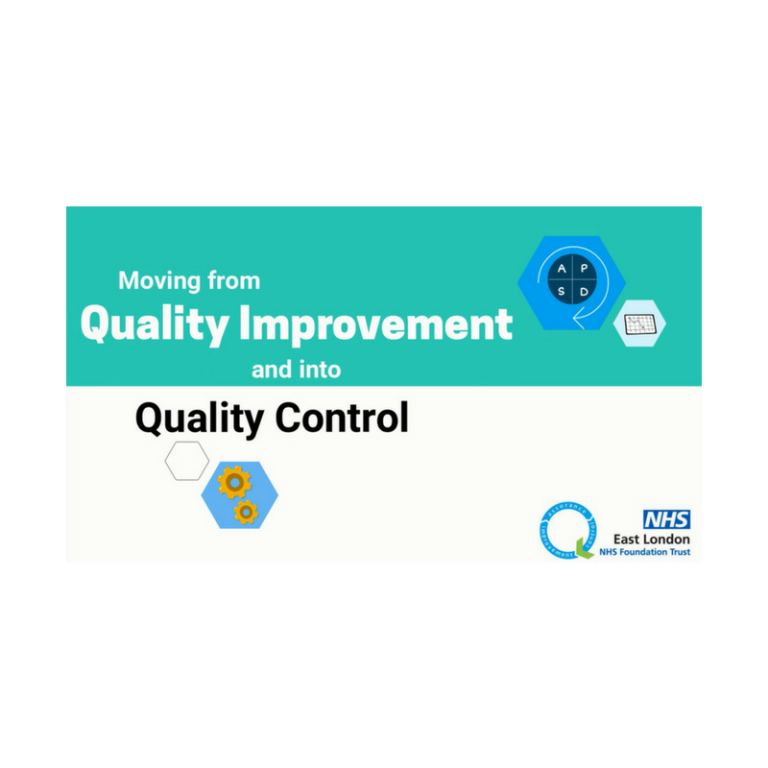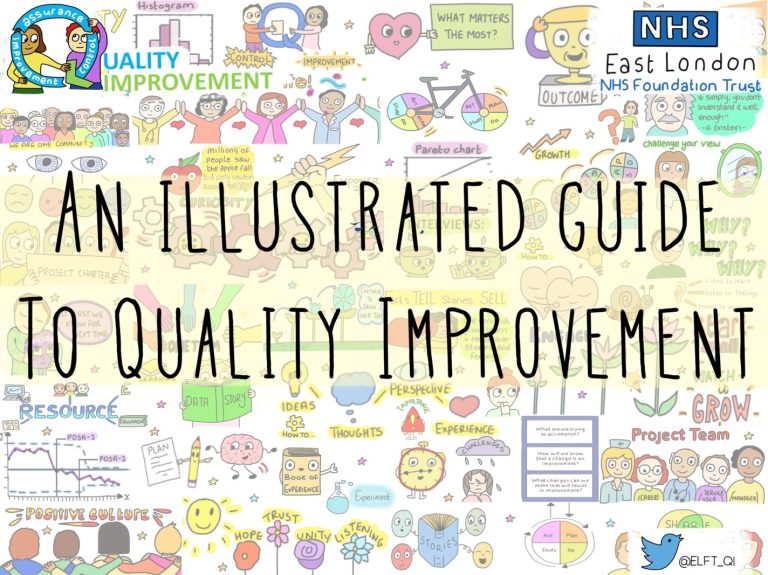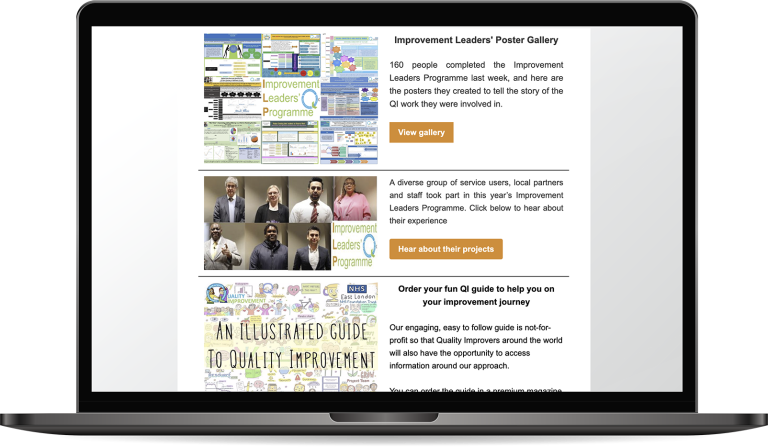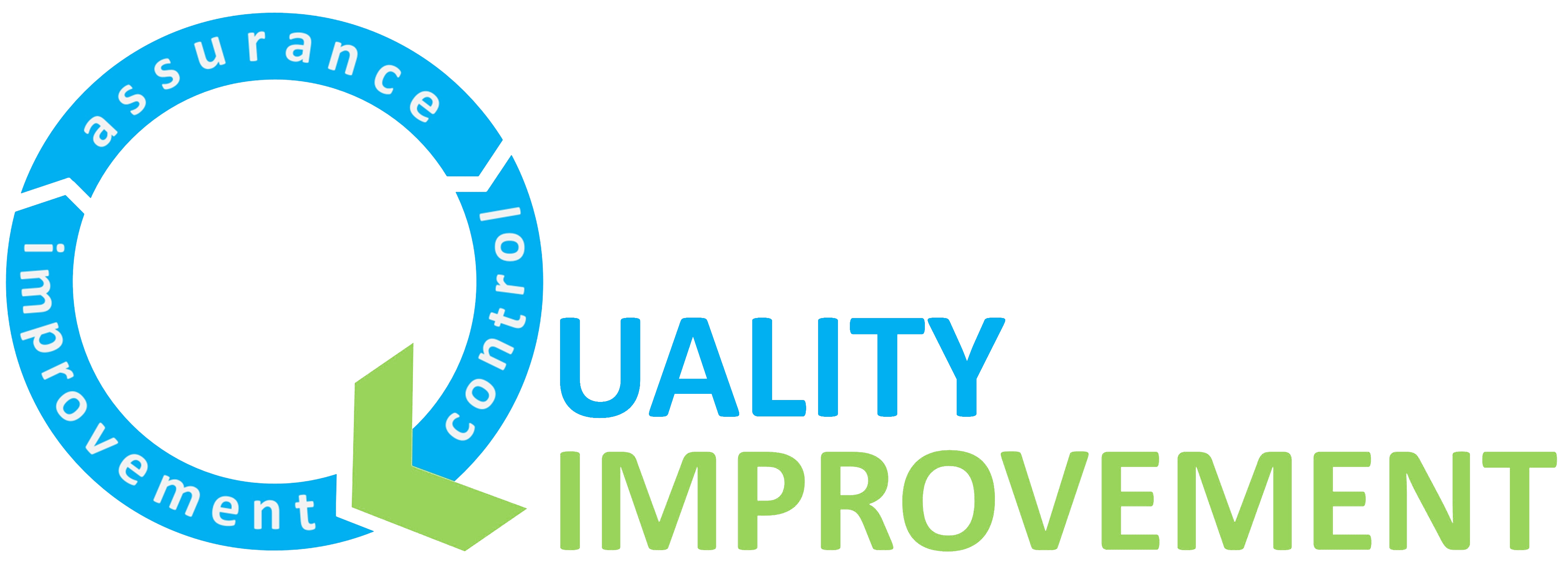
Evolving the Quality Wheel: What happens when a QI project finishes?
24th July 2018
In this blog, Improvement Advisors Emma Binley and Francisco Frasquilho detail the transition from Quality Improvement to Quality Control through the examples of projects in Tower Hamlets and City & Hackney.

Taking part in a QI project can bring many resources and opportunities for learning as well as a host of challenges around changing systems, processes, and culture. A hoped for outcome for any QI work is that improvement learning and skills become implemented as part of the original project, leading to self-sustaining and ultimately further generative improvements. However, invariably systems change in response to internal and external pressures. Staff come and go. Focus shifts onto other concerns and gains risk being lost.
So, what would a “follow up” plan look like? How can teams keep gains, their learning accessible, and open to responsive change if needed? The Quality Control approach under development at ELFT is a means to look at how teams can develop routine processes that support having the right kind of data, sufficiently accessible for review, reflection, and, if needed, action.
A case in point has been the Violence Reduction QI Collaborative developed at ELFT, which started in Tower Hamlets following sentinel incidents in 2013. This Collaborative was one of the driving forces behind developing QI in the Trust. A testimony to the success of this work was how it has, and continues to be, spread across all wards in the Trust, especially in Luton and Bedfordshire. The original components tested in Tower Hamlets (Broset Violence Checklist, Safety Huddles, Safety Discussion in Community Meetings and Safety Cross) have been explored with other wards using a planned experimentation approach to identify which packages and combinations work best in their local contexts.
Following on from the fantastic reductions in violence achieved across Tower Hamlets, Newham and City & Hackney, all three Boroughs have been focusing on building sustainable Quality Control systems. Improvement Advisors are working with QI Sponsors and QI project leads to look at ways of sustaining gains after all the testing has been completed. This has involved the introduction of visual management; embedding quality control boards into the unit-wide huddles and the Collaborative learning sets have transitioned into local Time to Think structures.
Tower Hamlets Quality Control board is located in one of the wards management offices and is updated each day during the unit-wide safety huddle. More recently, that have been revisiting the content of their control board to focus more on being predictive and they have an additional huddles on Friday afternoons to ensure they are adequately resourced and supported over the weekend. Over the next few months they are planning to focus on strengthening the relationship between the unit wide huddle and ward huddles and how visual management can also be used by each of the wards.
City and Hackney have also been looking at how to set up systems and structures to keep their data live and flexible enough to notice changes that may signal a need to respond with changes to maintain gains. Their Violence reduction project saw a reduction of over 34% in red incidents (physical violence) across their in-patient unit per 1000 bed days. Jane Kelly, one of the QI Sponsors for this work, developed an implementation plan to embed key change ideas around the safety cross and safety huddles. The inpatient management teams are now working on a number of ideas to support monitoring of information, including ongoing safety cross data, to help identify when action is needed to bring the system back to the new levels reached in response to the improvement work. Some of the ideas tested around this include:
- Ongoing Data collection and Visual management: Control Board to record key information for each ward;
- Opportunities for review: Creating space in daily, weekly, and monthly meetings to support wards identify risks and identify responses to these;
- Clarifying Standard work in relation to Quality Control aims: Identify and develop involvement of different staff roles in sustaining gains and responding to signals of change in the data.
Similarly to Tower Hamlets and City and Hackney, Newham are now working on refining their quality control board and quality control systems. Their unit-wide safety huddle takes place on a daily basis around their quality control board and they have also developed an audit template, which they share and discuss on a monthly basis at the Senior Nurse’s meeting, with the aim to ensure that the change bundle continues to be used reliably. The collaborative learning sets have now transitioned into Time to Think meetings which also focuses on reducing restrictive practices.
What Next?
Each of the directorates are now focusing on how they can support and encourage the wards to use visual management and develop their own ward level quality control boards which will then connect closely to the unit-wide huddles and boards. Our Improvement Advisors Anna Smith and Nynn Chang have continued to support the Violence Reduction work and are developing a joint model of Quality Control based on the learning above. Watch this space for more news!
Most Read Stories
-
Why is Quality Control important?
18th July 2018

-
An Illustrated Guide to Quality Improvement
20th May 2019

-
2016 QI Conference Poster Presentations
22nd March 2016
-
Recognising Racism: Using QI to Help Take Action
21st January 2021

-
Using data enabled us to understand our problem
31st March 2023

-
QI Essentials: What does a Chief Quality Officer do?
18th March 2019


Follow QI on social media
To keep up to date on the latest concerning QI at ELFT, follow us on our socials.



